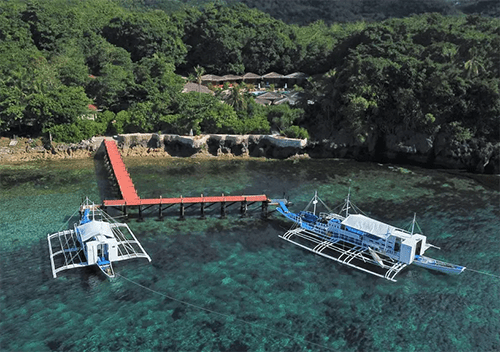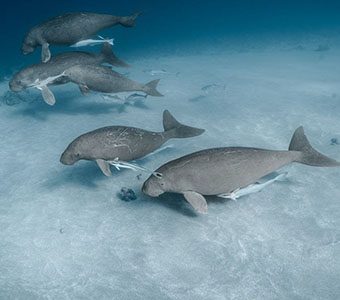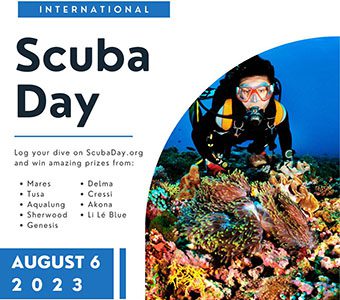There are many fabulous dive destinations in the Philippines that have become well-known to travelling divers. But one spot you might not have heard of is Anda.
Dive resorts have been established in Anda for several years yet it is still relatively unknown. But that looks set to change, with the area having a great variety of reef and muck sites that are overloaded with fish and critters. Having produced the world’s first guidebook on muck diving, I was surprised that I had never heard about Anda. So keen to see what the diving was like in the area, my wife Helen and I booked a five-day package at Magic Oceans Dive Resort.
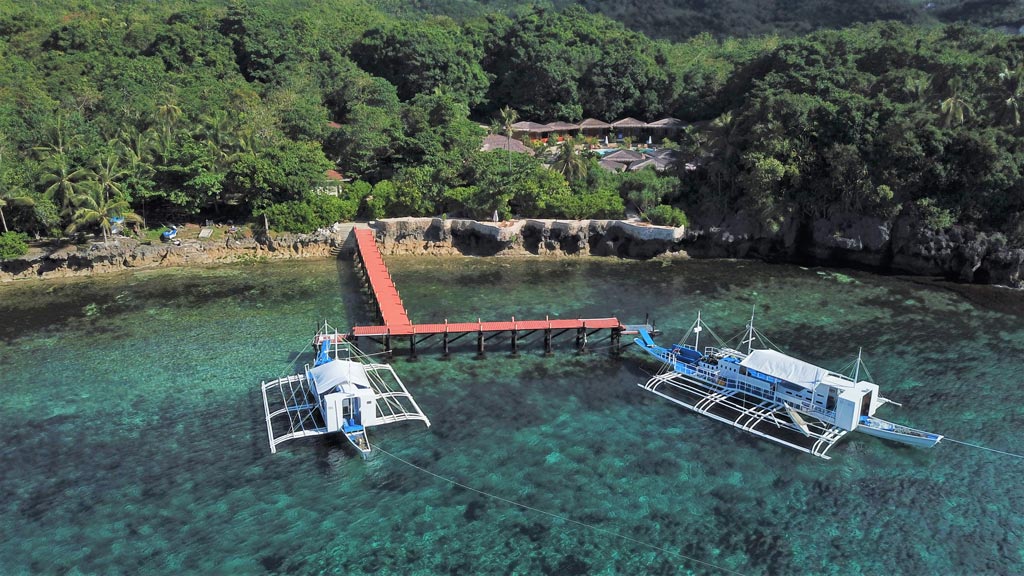
Anda is located on Bohol, in the Visayas region, and is reached on domestic flights from Manila or by ferry from nearby islands. Bohol is not a new diving destination by any means, as it has always been well-known for its reef diving around the islands near the capital of Tagbilaran. However, Anda is located a two- and half-hour drive east of the city, in a remote area with lush jungles and a rocky coastline.
Arriving at Magic Oceans Dive Resort, via a narrow dirt track, we quickly realised how remote this area is, as there are no nearby towns with restaurants and bars, so it’s a good thing that meals are included in a package deal. The resort has 16 bungalows arranged around a large pool, plus a spacious dining and lounge area and of course a well-appointed dive centre. Arriving in the afternoon, we dropped our bags in our very spacious bungalow, had a late lunch and then gathered our dive and camera gear for the afternoon dive.
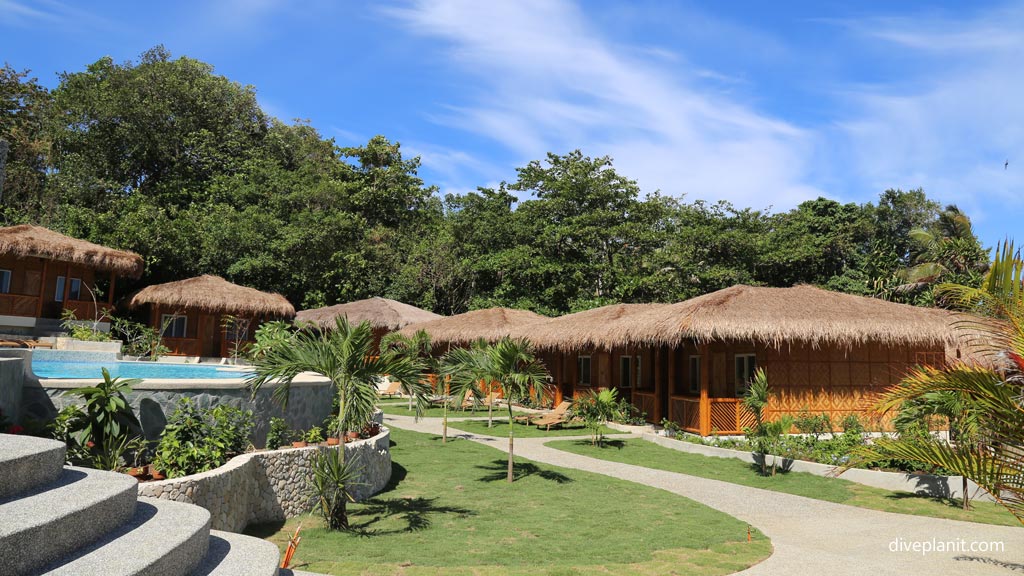
The dive centre has nitrox and operate three banka dive boats, so can handle several groups at once. Our guide Lee Ann gave us a quick run-down on procedures and then we were off to explore Turtle Point. Around Anda divers can explore thirty dive sites east and west of the resort. Turtle Point was a very short boat ride, as it is located right next to the resort’s House Reef.

Slipping into the calm blue water it was great to be back in the Philippines with 20m visibility and 29°C water. Directly below the boat was a garden of hard corals in only 5m of water, that was covered in small reef fish and invertebrates.

We followed Lee Ann to the edge of the reef where a wall dropped to 20m, then enjoyed a slow drift, admiring all the colourful soft corals, sponges, ascidians and whip corals. We quickly spotted abundant reef fish, including a great variety of angelfish, butterflyfish, basslets, anemonefish, wrasse, morays and surgeonfish. This may not have been a muck dive, but there were still plenty of great critters, with Lee Ann pointing out nudibranchs, mantis shrimps, candy crabs and a lovely warty frogfish.
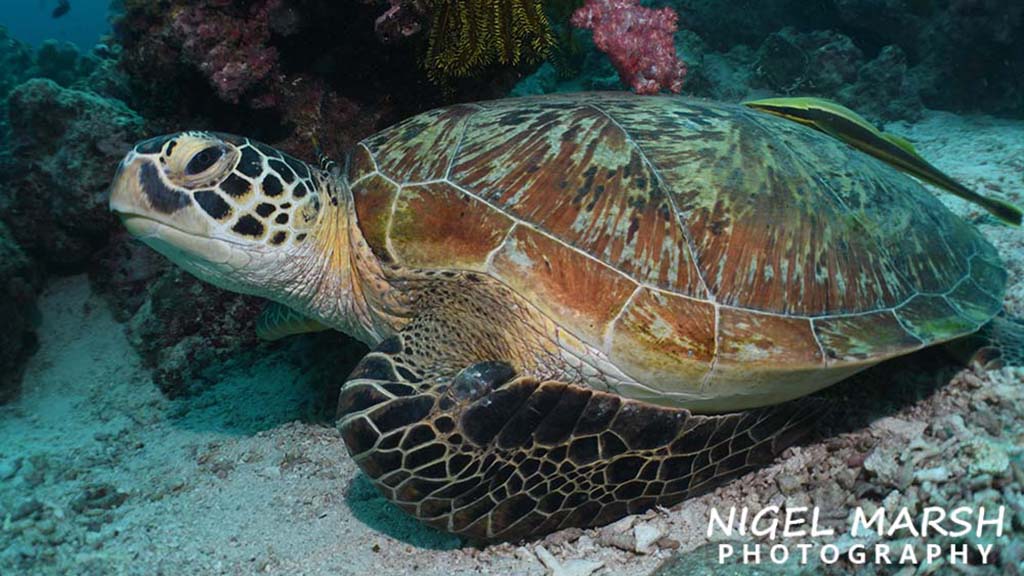
Back in the shallows we could see why this site is called Turtle Point, as we easily spotted a dozen green and hawksbill turtles. At the end of the dive we were joined by a yellow-lipped sea krait that was inspecting the coral for a meal.
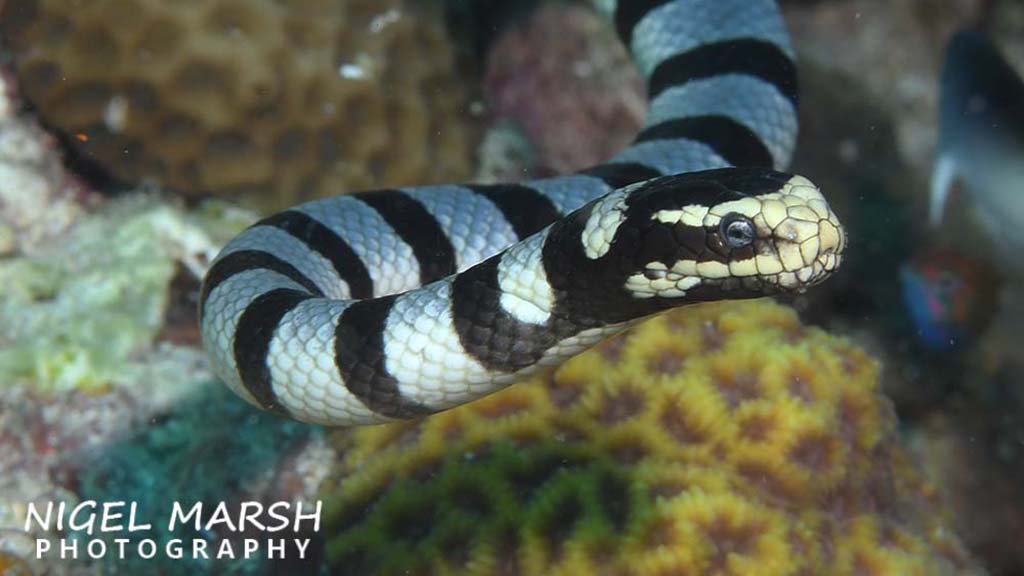
The next morning, we had our first chance to see what the Anda muck diving is like at J Edens Place. This site has a sandy slope, with the odd coral patch, in depths from 8m to 25m. Lee Ann and the other local Filipino guides know all these muck sites well and are excellent at finding even the smallest of critters. On this dive Lee Ann found us three warty frogfish, including a baby only 2cm long, mantis shrimps, robust ghostpipefish, banded pipefish, shrimp gobies, sleeper gobies, fire urchins and several snake eels. The small coral patches were also an oasis for small fishes, covered in cardinalfish, damsels, scorpionfish, dwarf angelfish, tobies, lionfish and morays.
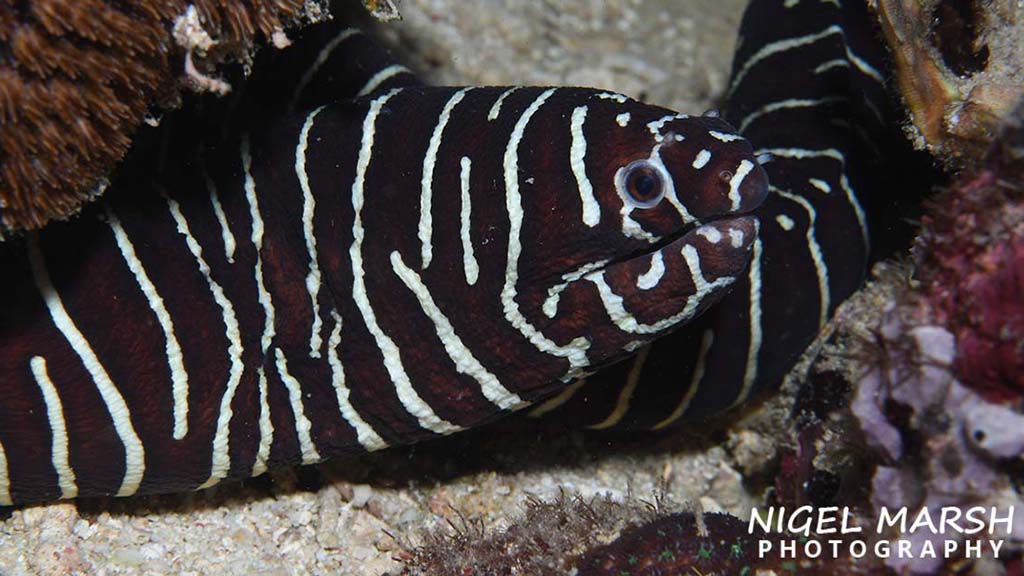
Over the following days we did three or four dives a day, exploring a great mix of reef and muck sites, including a few sites that had both these habitats. Some of the wonderful reef dives included Birhen Point, where we saw pygmy seahorses and thousands of garden eels, while at Pygmy House we saw xeno crabs, fingered dragonets and a Pegasus sea moth. The House Reef was also superb for a twilight/night dive, being a good place to see splendid Mandarinfish, cuttlefish, harlequin shrimps and even a rare zebra moray.

However, the most interesting reef dive was at Lumayag Point. This lovely wall is covered in colourful corals, and overloaded with fish and nudibranchs. But the highlight was a rarely seen leopard shrimp sitting on a similarly patterned tiger anemone.
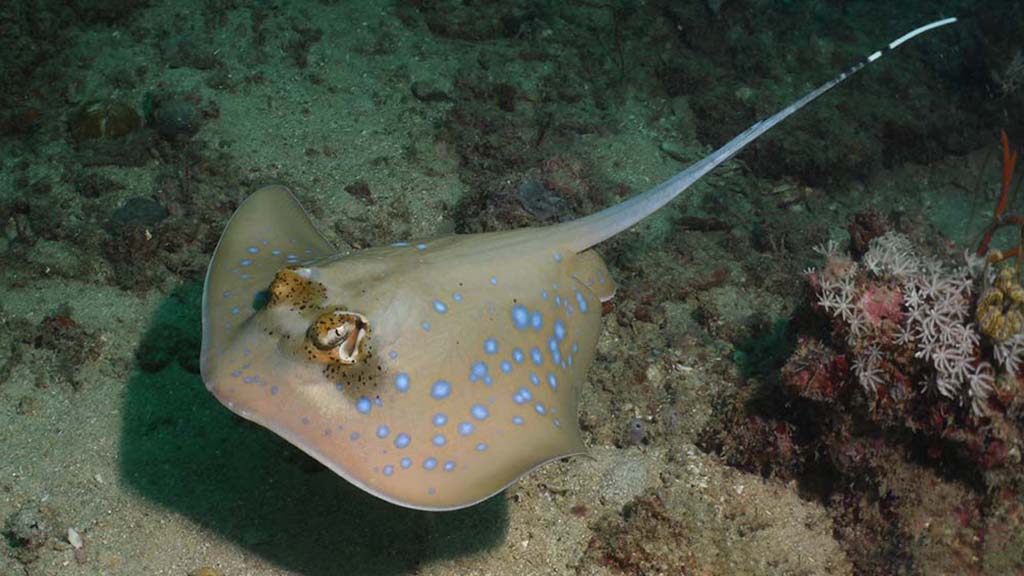
While the reef dives were fabulous, it was the muck dives we will most remember. Lamanok Island has coral gardens, a reef wall and plenty of sand to explore. Here we saw numerous oriental bluespotted maskrays and a good variety of reef fish. However, the muck critters included a flamboyant cuttlefish, robust ghostpipefish, nudibranchs, gobies and a giant frogfish. Nearby Lamanok Sanctuary has a sandy bottom where we saw wonderpus, garden eels, flatworms, mantis shrimps and the smallest baby painted frogfish we have ever seen, it was barely 2mm long!
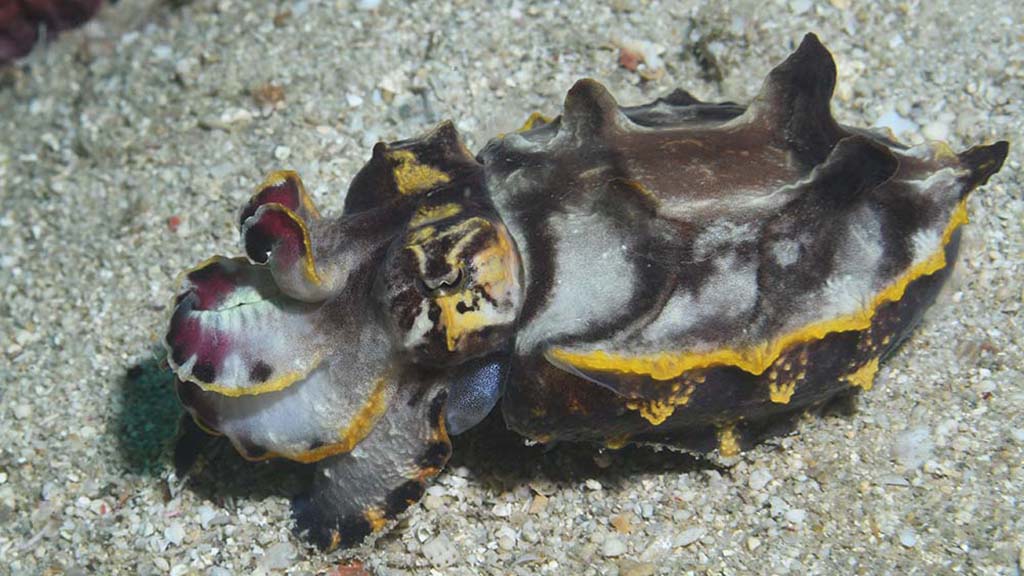
At Dapdap we explored another sandy slope to see longhorn cowfish, sea pens, tube anemones, commensal shrimps, snake eels, oriental flying gurnards, convict blennies, gobies and a small giant frogfish.
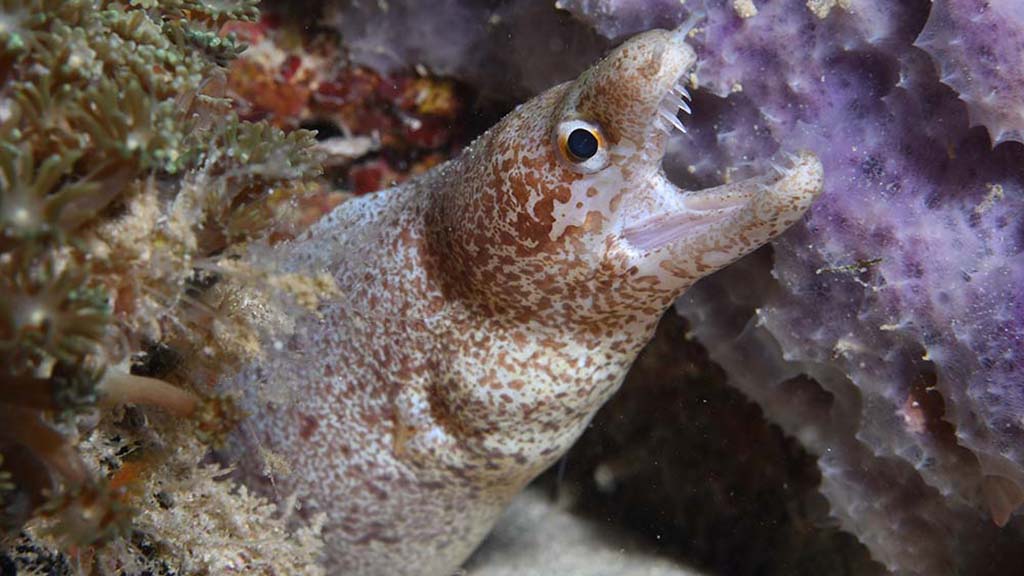
Our favourite muck site was Larry’s Corner, named after one of the dive guides. This site is only 8m deep and has fine silty sand. Only minutes into the dive we saw the first critter, a mimic octopus. We then found two more mimic octopus and a wonderpus.

Exploring the sand for over seventy minutes we also found bentstick pipefish, pufferfish, razorfish, a great variety of gobies and a tiny cuttlefish. There were also lots of urchins and rhinoceros sea stars, and hiding next to these sea stars were two white hairless hairy frogfish.

We had a wonderful stay at Magic Oceans Dive Resort at Anda. The diving was superb, but so was the resort, the very friendly staff and the fabulous meals. Doing three to four dives a day we didn’t have time to visit the day spa or do a local tour, so we will have to leave that to the next time we visit this wonderful part of the Philippines.

